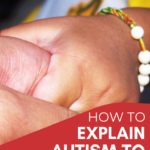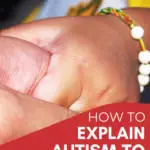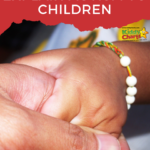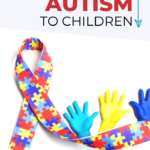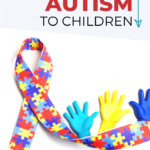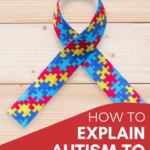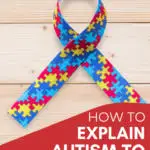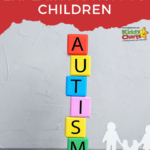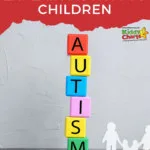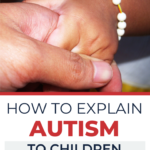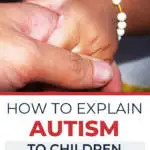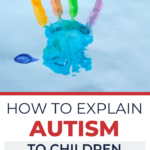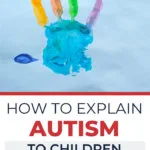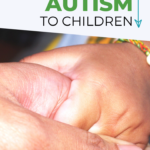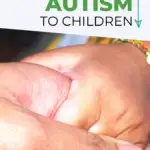Today in 31 Days of Learning, we have the wonderful Steph from Steph’s Two Girls, who has a truly inspirational blog that helps many to understand autism and pathological demand avoidance. Steph can explain things so much better than we can….Nowadays, there are lots of children with autism attending mainstream schools (or trying to, but that’s another story!). That means there’s a good chance your child might have an autistic classmate now or at some point in the future. Would you know how to explain autism to your child? This post might give you some ideas of where or how to start.
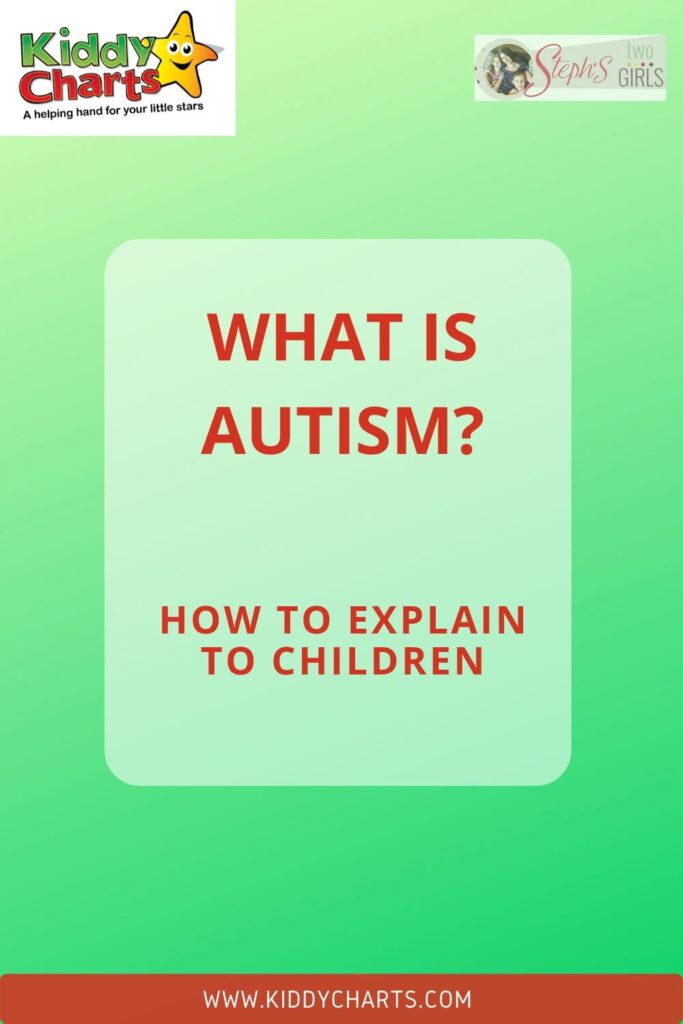
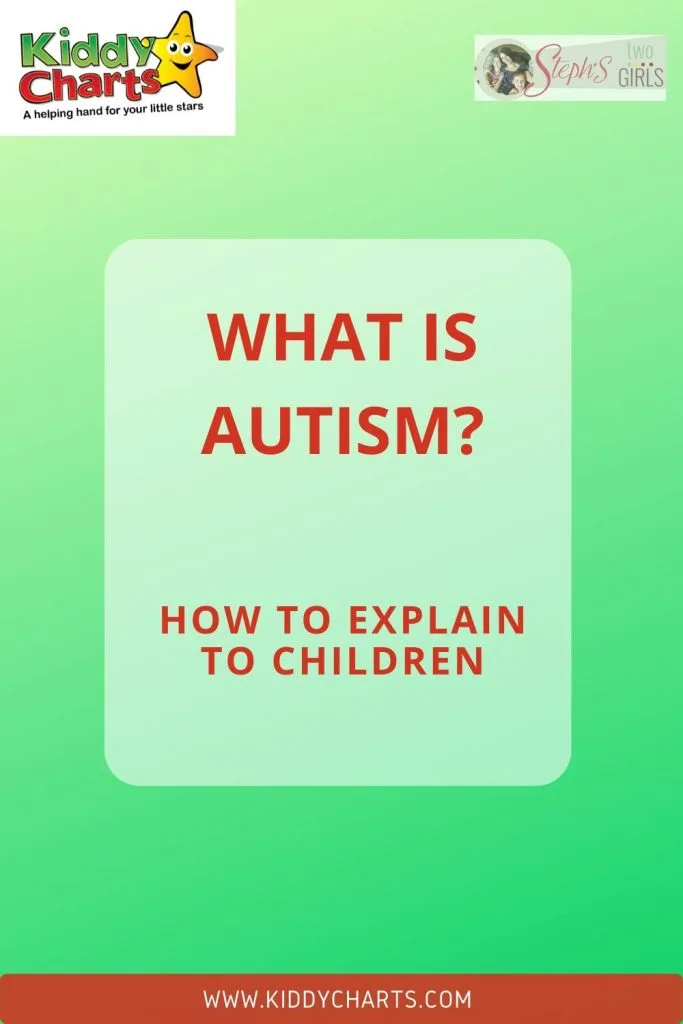
The amount of information you choose to share will probably depend on your child, taking into account how old they are, how many questions they have or how much they are likely to understand. Likewise, the language used to explain will vary in complexity based on those factors mentioned above and should be altered accordingly.
Here are some basic starters for you.
What is autism?
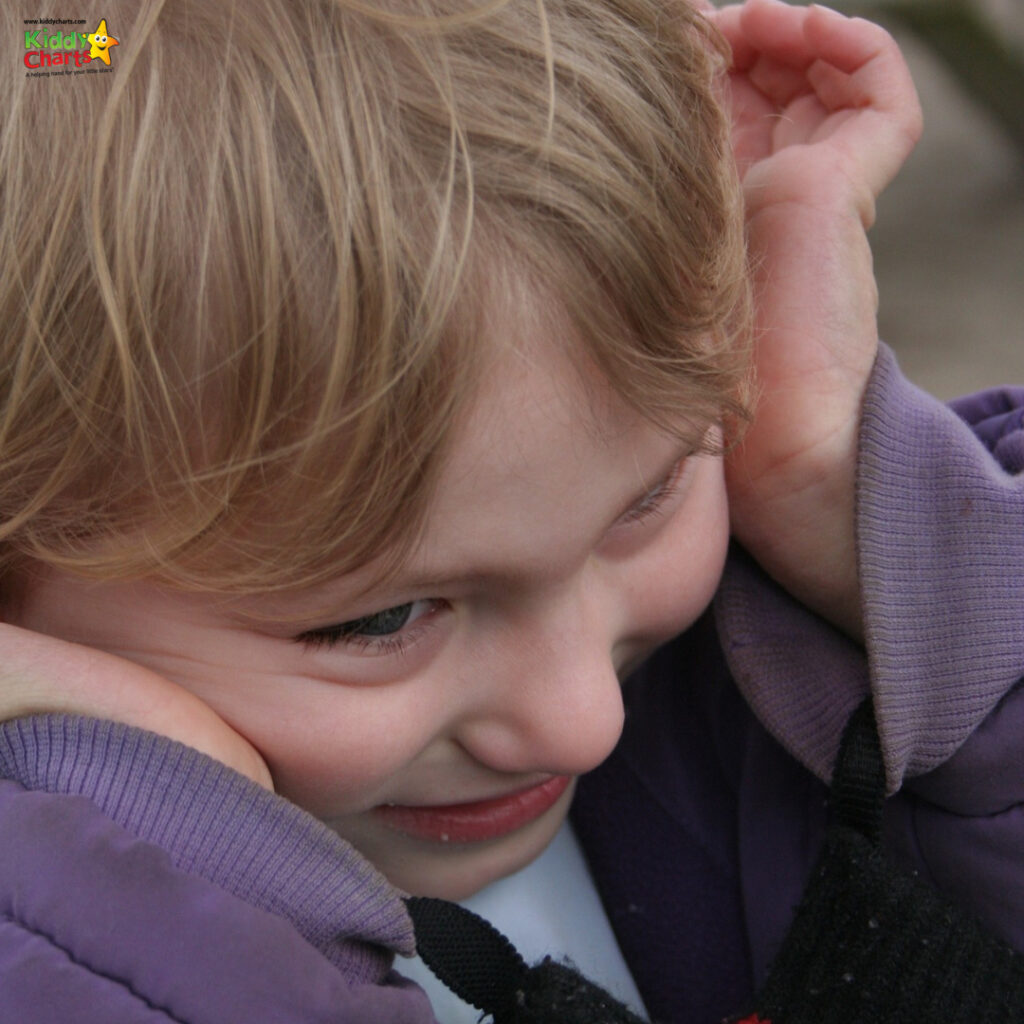
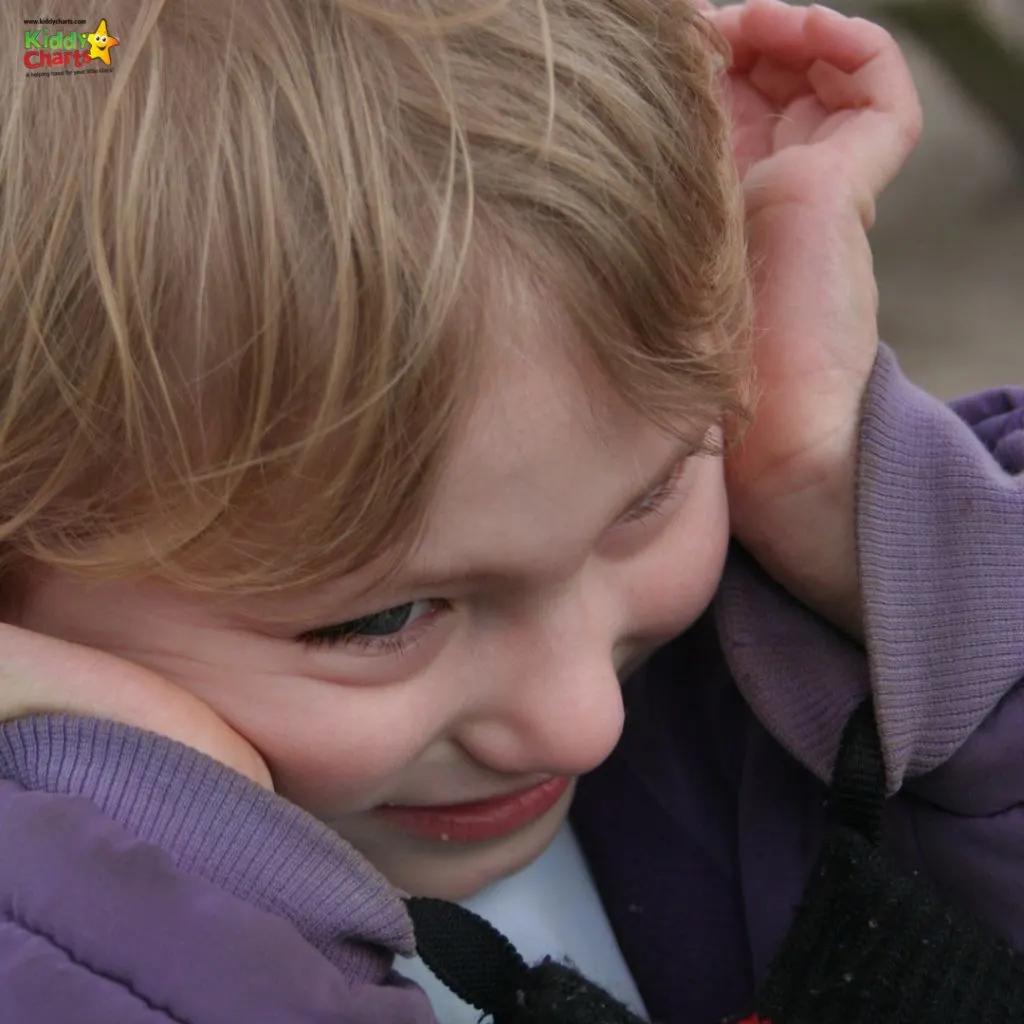
Autism means having a brain which works differently from many other people.
Children with autism can find it difficult to understand what other people think and feel. They might act differently to how most children act, but there is often a reason for this.
Every person with autism is different; they don’t all like the same things or talk the same way. They are all individuals like you and me and have different likes and dislikes.
Autistic children and adults often find change difficult if they have not been prepared for it.
People with autism often have sensory issues; this means they might find lights too bright, noises too loud or clothes too itchy.
Some children with autism need to ‘switch off’ or calm down when everything gets a bit too much. If this happens, they probably need a quiet space with not much noise and no questions for a while.
How can I help my friends with autism?
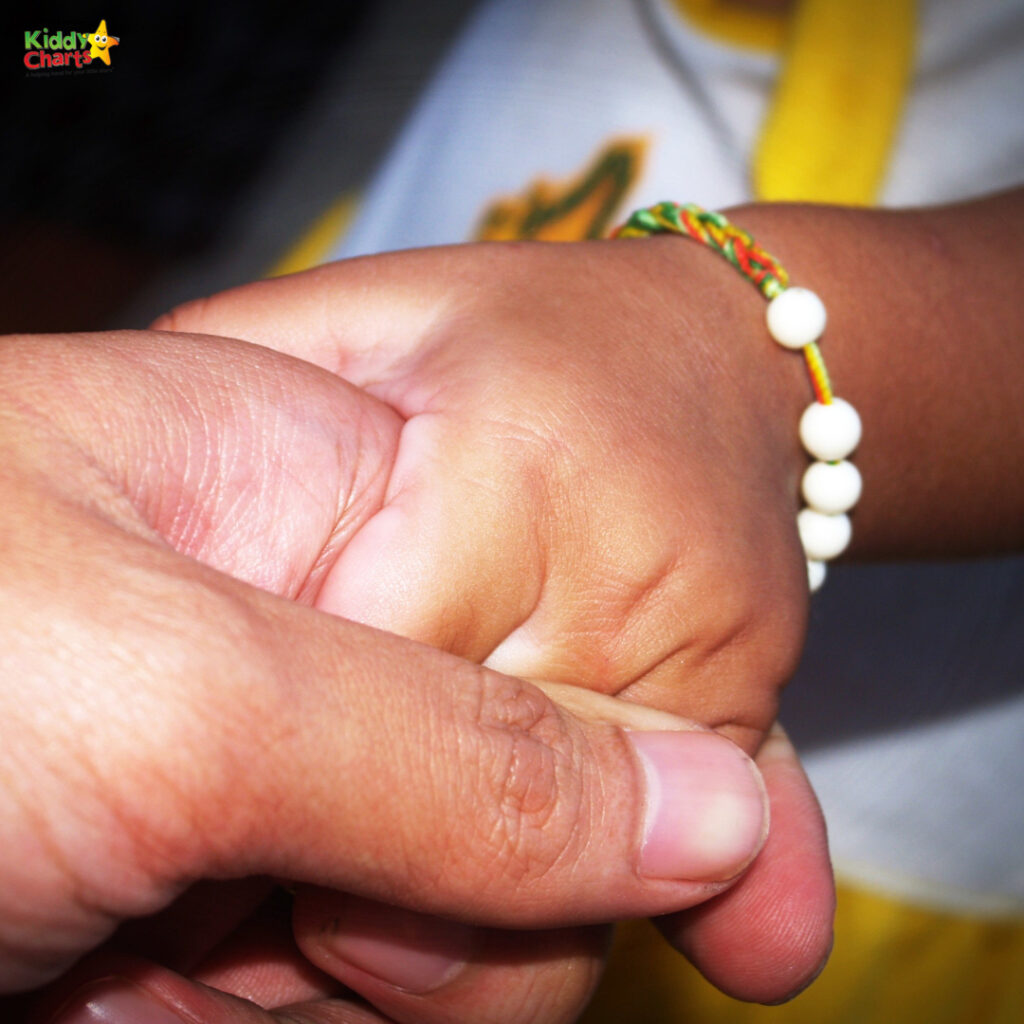
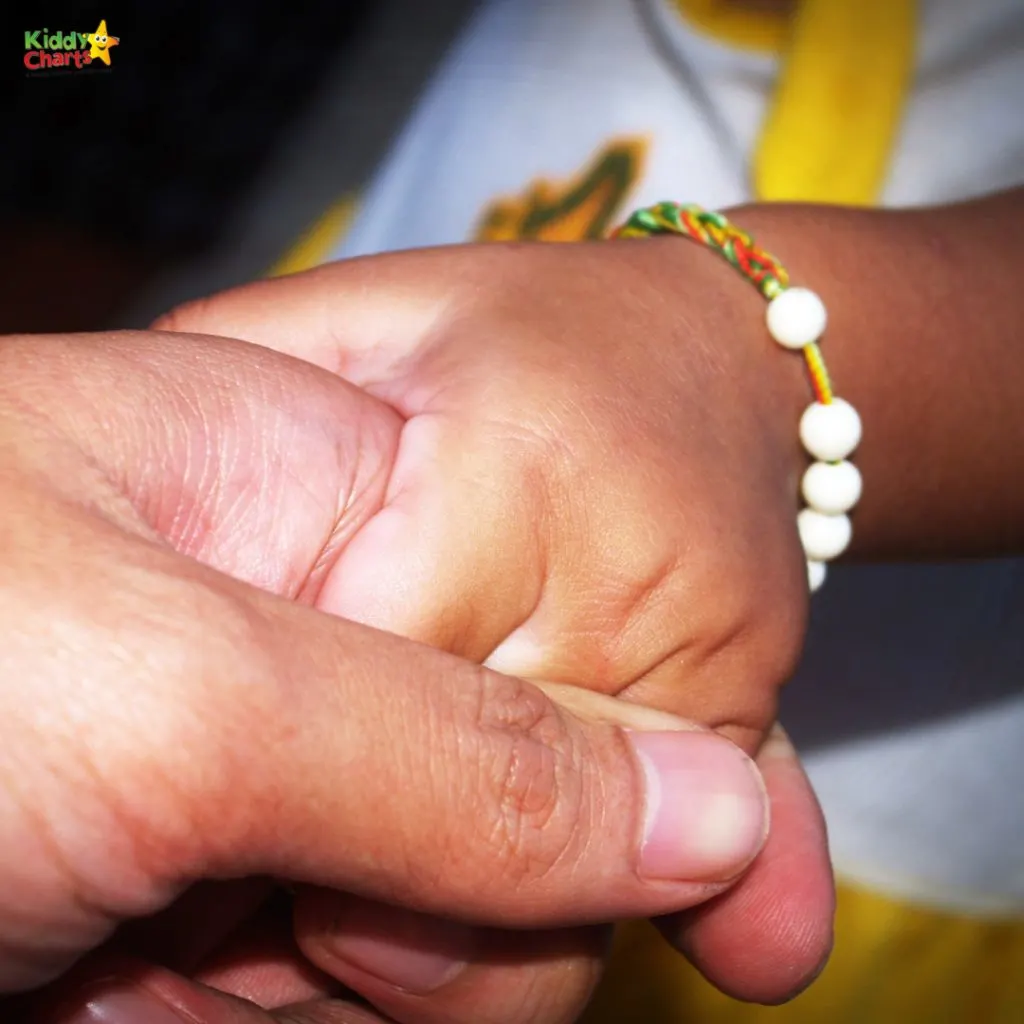
If you have an observant child, they may have already noticed a child who is different in their class. Perhaps they are keen to help in some way, but they don’t know how to approach or involve the autistic child.
Here are some ideas on how to be friends with someone with autism:
- Ask them what they like to do.
- Give them extra time to answer your question or to work out what they need to do.
- Talk in short sentences or use pictures to help them understand.
- Understand that some children might find it difficult to talk, while others might talk a lot but only about their special interests.
- Ask about their special interests if they have any; tell them about yours too.
- Protect your friend by letting adults know if they are upset
- Think about their good points and tell them – do they have a good memory, a great smile or a good imagination?
- Be patient if they are getting upset. They don’t want to hurt you, they may just be frightened or frustrated.
- Include them in your games – small groups or individuals are usually much easier for autistic children to understand and play with.
- Ask your teacher questions about your friend if you are not sure why they are doing something differently
- Help explain what you know about autism to other children who might not understand it.
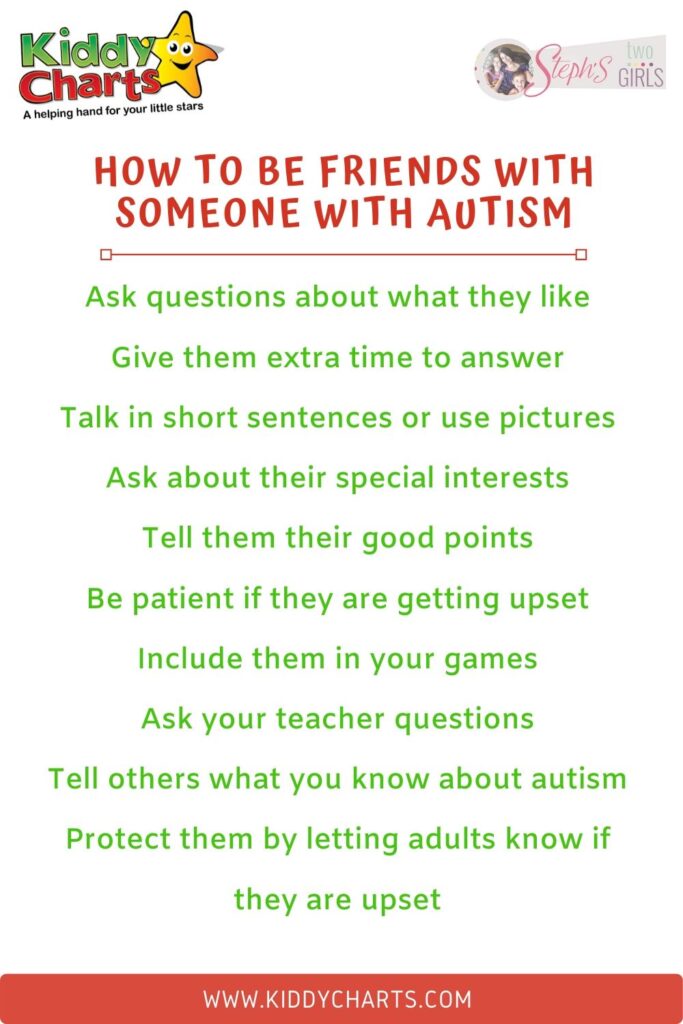
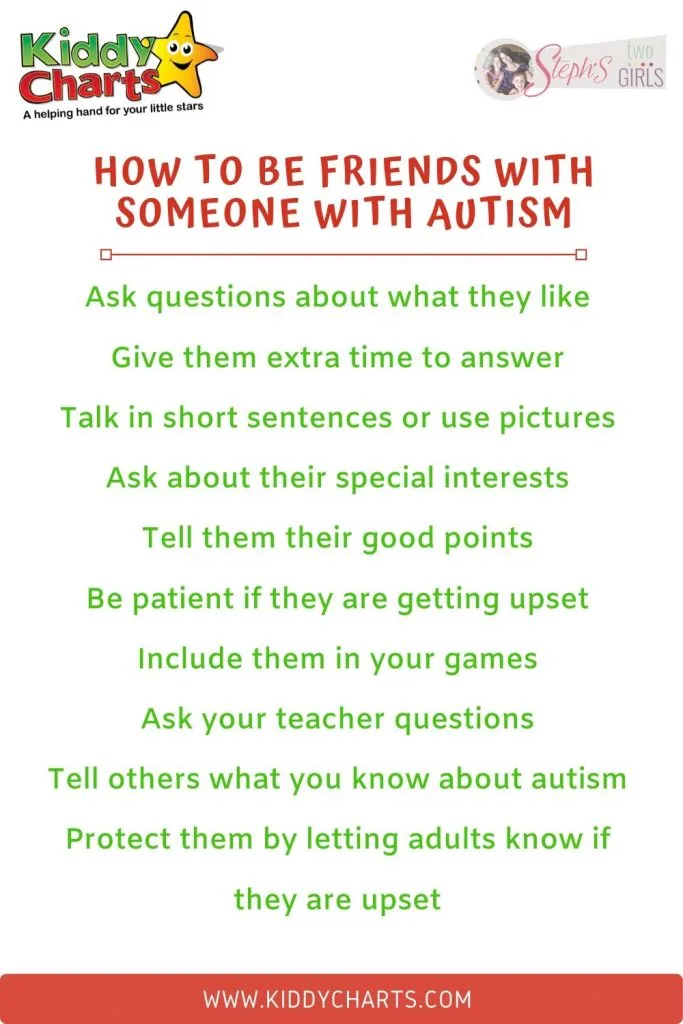
To find out more about our experiences, please visit Steph’s blog too. In particular, she has some excellent resources on the Pathological Demand Avoidance (PDA) profile of autism:
- What is PDA (Pathological Demand Avoidance)? and
- Ten things you need to know about Pathological Demand Avoidance
As always, we would love you to stick around, so do sign up to our weekly newsletter if you like this article, and any of the others within the series.
We do have other relevant resources for special needs too, so do check some of these out as well.
Special needs related resources
Here are some more resources on KiddyCharts that would be helpful for those with special needs.
Reward Me Charts
Our reward charts can be beneficial for those with autism, depending on their specific needs, as they are very visual. It might be worth taking a look.
Parenting a Special Needs Child: 5 top tips
Here are some top tips on parenting a special needs child from a lady who knows.
Tips for potty training special needs children and starting nursery: From a mum who knows
More thoughts on potty training from a mum who went through it.
Tips for preparing your special needs child for school
Finally, thoughts on preparing for school.
Thanks you for popping over and we hope to see you here again very soon.
Helen

